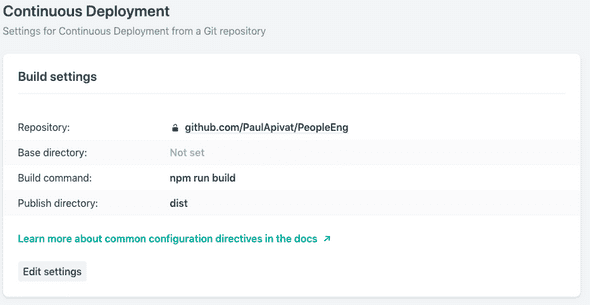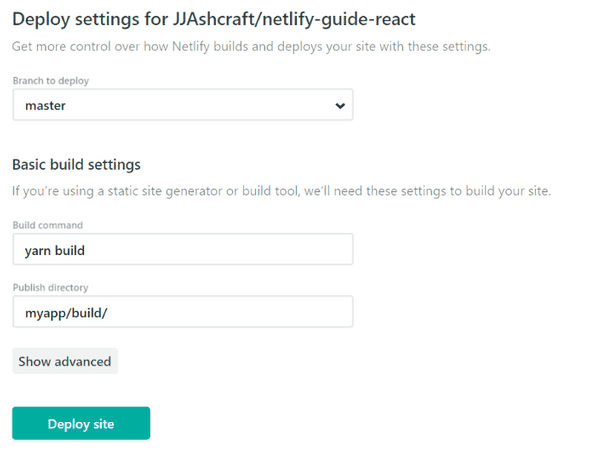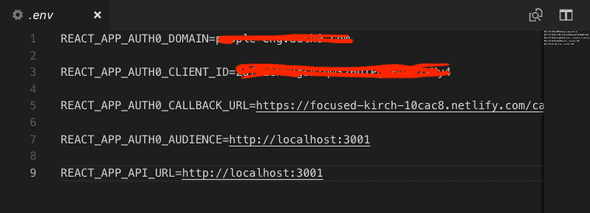Deployment, Netlify and Auth0
July 12, 2019
Deploying on Netlify
Here are the steps I took to deploy a React App with Auth0 authentication on Netlify.
Step 0
Create-react-app and basic Netlify setup source
Step 1
Create netlify.toml file outside of the App directory with the following content:
[build]
base = "my-people/"
publish = "my-people/build/"
command = "yarn build"Step 1a
Make sure Basic Build Settings in Netlify Settings > Build & Deploy > Build Settings
For continous deployment from the github repo
My Build Settings
Alternative Build Settings
Step 2
Make sure Auth0 is configured correctly.
NOTE: Create a new “tenant” in Auth0 for Production (vs Development) environments
- Create an account with Auth0; create new tenant for Production environment, separate from Development environment
- Create a new application in the tenant.
- Assuming the app is a SPA (single page application)
- In the Settings for your new Auth0 application, add your URL to Allowed Callback URL, in my case (https://focused-kirch-10cac8.netlify.com/callback)
- Replace the clientID in the SPA with the client id from your Auth0 dashboard.
- Replace redirectUri in the SPA with the Allowed callback URL from your Auth0 dashboard.
- Ensure the Allowed Web Origins, Allowed Origins(CORS) in your Auth0 dashboard is set to your live URL. In my case, https://focused-kirch-10cac8.netlify.com/.
- Your audience should be the audience you set when you created the API for the backend.
All this amounts to your .env file being created to match the new tenant and application in Auth0:
sample env file
Also setup your environment variables in Netlify settings
Step 3
Create _redirects file for Single Page Application
I got conflicting information on this one:
- Netlify documentation says you can add
_redirectfile to root of the application or tonetlify.tomlfile source - React documentation says you can add
_redirectto the public directory source
I ended up adding _redirect file to the build and public directories - build/_redirect and public/_redirect
All sources were in agreement on the contents of the _redirect file:
/* /index.html 200Step 4
Make sure you have your API set-up in Auth0 with the correct identifier
REACT_APP_AUTH0_AUDIENCE in both .env and Environment settings in Netlify point to http://localhost:3001 and that should be the identifier setup in your Auth0 API
Written by Paul who lives and works in Bangkok building useful things. You should follow him on Twitter



